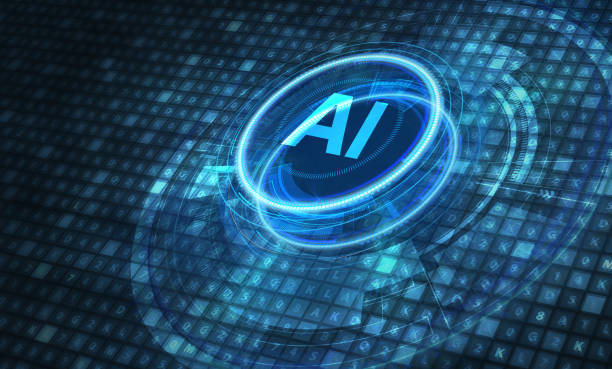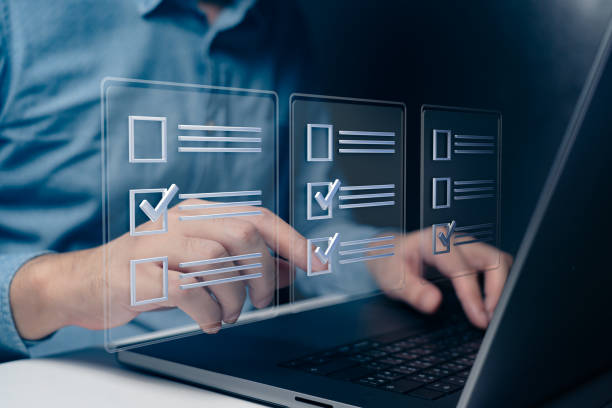What is an Artificial Intelligence Robot and How Does it Work?
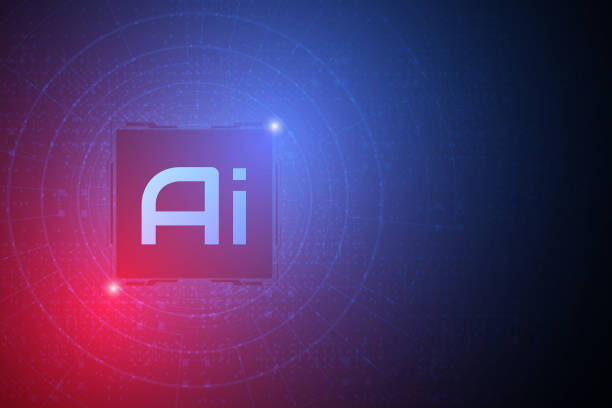
Artificial intelligence robot, is a combination of two key concepts: #Robotics and #Artificial_Intelligence.
Simply put, an AI robot is a physical or software machine that is capable of performing tasks that typically require human intelligence.
These tasks can include learning, problem-solving, decision-making, natural language understanding, and machine vision.
The way an AI robot works is that it first collects data through its sensors (such as cameras, microphones, or touch sensors).
Then, this data is processed by artificial intelligence algorithms.
These algorithms help the robot to recognize patterns, interpret information, and make decisions based on it.
Finally, the robot reacts to its surroundings using its actuators (such as motors, arms, or speakers).
An advanced AI robot has the ability to learn from its experiences and can improve its performance over time.
In short, an AI robot is a complex system that uses a combination of hardware and software to perform tasks that require human intelligence.
Does your current company website present a worthy image of your brand and attract new customers?
If not, turn this challenge into an opportunity with Rasaweb’s professional corporate website design services.
✅ Dramatically improves your brand credibility and image.
✅ Smooths the path for attracting leads and new customers.
⚡ Contact Rasaweb now for a free, expert consultation!
Types of Artificial Intelligence Robots Based on Application
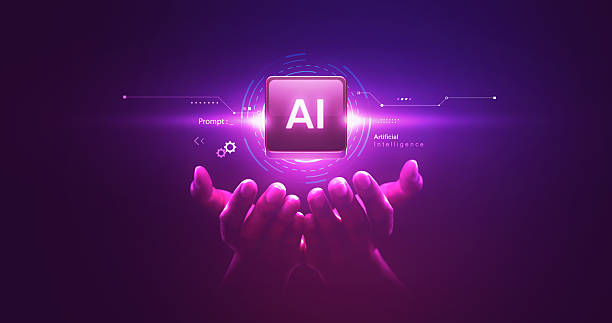
Artificial intelligence robots can be categorized based on different applications.
Some of the most important types of these robots include:
Industrial robots These robots are used in factories and production lines to perform repetitive and dangerous tasks.
For example, we can refer to robots that move parts, perform welding, or package products.
Service robots These robots are designed to provide services to humans.
These services can include cleaning homes, caring for the elderly, or answering customer questions.
Medical robots These robots are used in hospitals and medical centers to assist doctors and nurses.
For example, we can refer to robots that perform surgery, distribute medications, or help patients move.
Military robots These robots are used in battlefields to perform dangerous tasks such as reconnaissance, bomb disposal, or carrying weapons.
Space robots These robots are designed to explore space and conduct scientific research in environments inaccessible to humans.
Given the increasing advancement of artificial intelligence, it is expected that in the future we will see the expansion of the applications of AI robots in various fields.
An AI robot must be able to interact well with humans.
Advantages and Disadvantages of Using Artificial Intelligence Robots
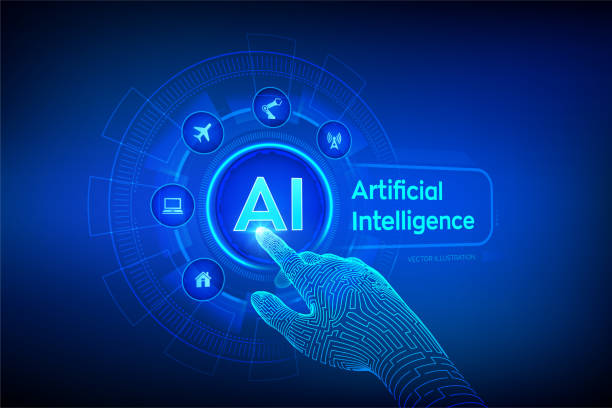
Using artificial intelligence robots has many advantages, including:
Increased Productivity Robots can work 24 hours a day without fatigue, which leads to increased productivity and reduced costs.
Improved Quality Robots can perform tasks with greater accuracy and consistency than humans, which leads to improved quality of products and services.
Reduced Risks Robots can work in dangerous environments instead of humans, which leads to reduced risks and injuries.
Increased Speed Robots can perform tasks faster than humans, which leads to reduced production and delivery times.
However, the use of artificial intelligence robots also has disadvantages, including:
High Cost Purchasing and maintaining robots can be expensive.
Job Loss Replacing humans with robots can lead to job loss and increased unemployment.
Ethical Concerns The use of robots in important decision-making can raise ethical concerns.
Dependence on Technology Over-reliance on robots can increase vulnerability to failures and cyberattacks.
Overall, the decision to use artificial intelligence robots should be made by considering its advantages and disadvantages and according to the specific conditions of each application.
| Advantages | Disadvantages |
|---|---|
| Increased Productivity | High Cost |
| Improved Quality | Job Loss |
| Reduced Risks | Ethical Concerns |
Applications of Artificial Intelligence Robots in Various Industries

Artificial intelligence robots have wide applications in various industries.
In the manufacturing industry, these robots are used to perform repetitive and dangerous tasks such as welding, painting, and packaging.
In the #Healthcare industry, these robots are used to assist doctors in surgery, medication distribution, and patient care.
In the #Transportation industry, these robots are used to drive self-driving cars, deliver goods, and manage traffic.
In the #Customer_Service industry, these robots are used to answer customer questions, provide technical support, and conduct transactions.
In addition, artificial intelligence robots have many applications in other fields such as education, agriculture, and security.
With the advancement of technology, it is expected that the applications of these robots will expand in various industries and play a more important role in our lives.
Is the current design of your online store causing you to lose customers and sales?
Rasaweb is your solution with modern and user-friendly online store designs!
✅ Significantly increase conversion rates and sales
✅ Create strong branding and gain customer trust
⚡ Get a free online store design consultation from Rasaweb!
Challenges of Developing and Implementing Artificial Intelligence Robots
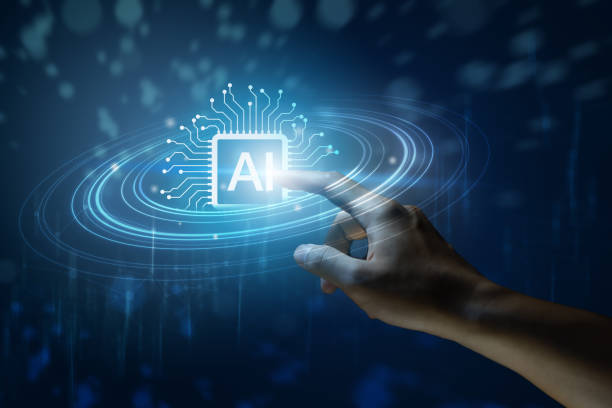
The development and implementation of artificial intelligence robots faces many challenges.
One of the most important of these challenges is collecting and processing enough data to train the robot.
Artificial intelligence robots need a large amount of data to learn and perform various tasks.
Collecting and processing this data can be time-consuming and costly.
Another challenge is developing appropriate artificial intelligence algorithms for each application.
Artificial intelligence algorithms must be able to accurately analyze data, recognize patterns, and make decisions based on it.
Developing these algorithms requires high expertise and knowledge.
In addition, artificial intelligence robots must operate safely and reliably.
The failure or malfunction of a robot can lead to serious injuries or financial losses.
Therefore, ensuring the safety and reliability of artificial intelligence robots is of utmost importance.
Finally, public acceptance of artificial intelligence robots is also an important challenge.
Some people may be concerned about using robots in their lives.
Public education and awareness can help address these concerns and increase public acceptance of artificial intelligence robots.
What will the Future of Artificial Intelligence Robots be?
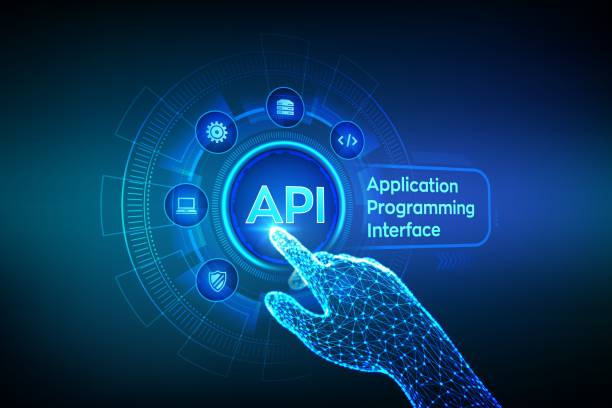
The future of artificial intelligence robots is very bright and full of potential.
With the increasing advancement of technology, it is expected that artificial intelligence robots will play a more important role in various fields.
In the future, we will see robots that are capable of performing more complex and diverse tasks.
These robots can be used in homes, workplaces, hospitals, and even in space.
One of the most important trends in the future of artificial intelligence robots is the development of autonomous robots.
These robots will be able to operate in complex and dynamic environments without the need for human intervention.
Autonomous robots can have many applications in fields such as transportation, agriculture, and space exploration.
Another trend is the development of collaborative robots.
These robots are designed to work alongside humans and can assist them in performing various tasks.
Collaborative robots can have many applications in fields such as manufacturing, healthcare, and customer service.
Overall, the future of artificial intelligence robots is very exciting and it is expected that this technology will play an important role in shaping the future of society.
A good artificial intelligence robot can make life easier for humans.
The Impact of Artificial Intelligence Robots on the Labor Market

The impact of artificial intelligence robots on the labor market is a complex and controversial topic.
On the one hand, robots can increase productivity and reduce costs, which can lead to economic growth and the creation of new job opportunities.
On the other hand, replacing humans with robots can lead to job loss and increased unemployment.
Various studies show that the impact of artificial intelligence robots on the labor market depends on various factors, including the speed of technological progress, the amount of investment in education and training, and government policies.
Some jobs are more at risk of being replaced by robots than others.
These jobs usually include repetitive, routine, and low-skilled tasks.
For example, jobs such as telephone operator, production line worker, and truck driver are at high risk.
However, artificial intelligence robots can also create new job opportunities.
These opportunities are usually created in areas such as robot development and maintenance, data analysis, and artificial intelligence system management.
In order to benefit from the advantages of artificial intelligence robots and prevent its negative effects, we need to invest in education and training, develop support policies, and promote innovation and entrepreneurship.
| Positive Impacts | Negative Impacts |
|---|---|
| Increased Productivity | Job Loss |
| Creating New Job Opportunities | Need for New Skills |
| Reduced Costs | Economic Inequality |
Ethical Issues Related to Artificial Intelligence Robots
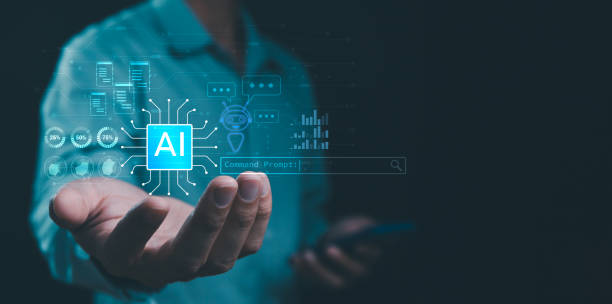
The development and use of artificial intelligence robots raises many ethical issues.
One of the most important of these issues is accountability.
If a robot makes a mistake, who will be responsible? The robot manufacturer, the programmer, or the user?
Another issue is privacy.
Artificial intelligence robots can collect a lot of information about us.
How should this information be protected? And how should its misuse be prevented?
The third issue is discrimination.
Artificial intelligence algorithms can be unintentionally discriminatory.
This discrimination can affect areas such as hiring, lending, and law enforcement.
To solve these ethical issues, we need to develop appropriate laws and regulations, public education and awareness, and develop fair and transparent artificial intelligence algorithms.
Artificial Intelligence Robot should serve humanity.
Are you frustrated with the low conversion rate of your online store?
Rasaweb is your definitive solution with professional online store design!
✅ Increase your sales and revenue
✅ Exceptional user experience for your customers
⚡ Get a free consultation now!
How to Build an Artificial Intelligence Robot

Building an artificial intelligence robot is a complex and challenging process that requires knowledge and skills in various fields such as robotics, artificial intelligence, and programming.
However, using the available tools and resources, even beginners can build a simple artificial intelligence robot.
The first step is to choose a suitable project.
Choose a simple project that is feasible and motivates you.
Then, you need to collect the necessary parts and tools.
These parts can include an Arduino board, sensors, motors, and a battery.
The next step is programming the robot.
For this, you can use different programming languages such as Python, C++, or Java.
Finally, you need to test and adjust your robot.
This process may be time-consuming, but it is necessary to ensure the robot is functioning properly.
With patience and perseverance, you can build and enjoy an artificial intelligence robot.
Resources and Tools for Learning Artificial Intelligence Robots

For learning about artificial intelligence robots, various resources and tools are available.
One of the best resources is online courses.
Various websites such as Coursera, Udemy, and edX offer training courses in the field of robotics and artificial intelligence.
Books are also a good source for learning about artificial intelligence robots.
There are many books on the basics of robotics, artificial intelligence, and robot programming.
In addition, online communities and groups can also be a good source for learning and exchanging information.
In these communities, you can ask your questions, share your experiences, and connect with other robotics and artificial intelligence enthusiasts.
Various tools are also available for developing and testing artificial intelligence robots.
These tools can include robotics simulators, robot development platforms, and artificial intelligence libraries.
Using these resources and tools, you can increase your knowledge and skills in the field of artificial intelligence robots and become an expert in this field.
An efficient artificial intelligence robot requires careful planning.
Frequently Asked Questions
| Question | Answer |
|---|---|
| What is an Artificial Intelligence Robot? | An Artificial Intelligence Robot (AI Robot) is a machine capable of understanding the environment, reasoning, learning, and making decisions to perform tasks independently. |
| What is the difference between regular robots and artificial intelligence robots? | Regular robots perform repetitive tasks based on pre-programming, while artificial intelligence robots can learn from experience, interact dynamically with the environment, and even behave in a way that resembles human intelligence. |
| What are the main applications of artificial intelligence robots? | They are used in industries (manufacturing, assembly), medicine (surgery, diagnostics), services (customer support, home), exploration (space, underwater), and many other fields. |
| What technologies are used in building artificial intelligence robots? | Machine Learning, Computer Vision, Natural Language Processing, Deep Learning, and Robotics are among the key technologies. |
| Can artificial intelligence robots have emotions? | Currently, robots do not have emotions in the human sense. They can identify and react to emotions, but they do not experience emotions themselves. |
| What are the main challenges in developing artificial intelligence robots? | Safety, reliability, ethics, autonomy, adaptability to complex environments, and natural interaction with humans are important challenges. |
| How are artificial intelligence robots trained? | They are usually trained using large amounts of data, machine learning algorithms, and deep learning to identify patterns and make decisions. |
| Examples of artificial intelligence robots in everyday life? | Smart robotic vacuum cleaners, customer support chatbots, self-driving cars, and surgical robots in hospitals. |
| Are artificial intelligence robots a threat to human jobs? | Some repetitive jobs may be automated, but at the same time, robots can increase productivity and create new jobs in the development, maintenance, and monitoring of these systems. |
| How is the future of artificial intelligence robots predicted? | They are expected to become smarter, more autonomous, and capable of performing more complex tasks and interacting more closely with humans in different environments. |
And other services of Rasa Web advertising agency in the field of advertising
Smart Marketing Automation: A dedicated service to grow website traffic based on intelligent data analysis.
Smart Sales Automation: A creative platform to improve sales growth by optimizing key pages.
Smart Digital Advertising: An innovative service to increase website traffic through precise audience targeting.
Smart Data Analysis: A dedicated service to grow website traffic based on the use of real data.
Smart Social Media: A creative platform to improve customer acquisition with marketing automation.
And more than hundreds of other services in the field of internet advertising, advertising consulting, and organizational solutions
Internet Advertising | Advertising Strategy | Advertorial
Resources
? To be seen in the digital world and reach the pinnacle of success, Rasaweb Digital Marketing Agency is with you. We bring your business to the place it deserves by offering specialized services including professional WordPress website design and targeted SEO. Contact us for a free consultation and to start the digital transformation of your business.
📍 Tehran, Mirdamad Street, next to the Central Bank, Kazerun Jonoubi Alley, Ramin Alley No. 6
“`

